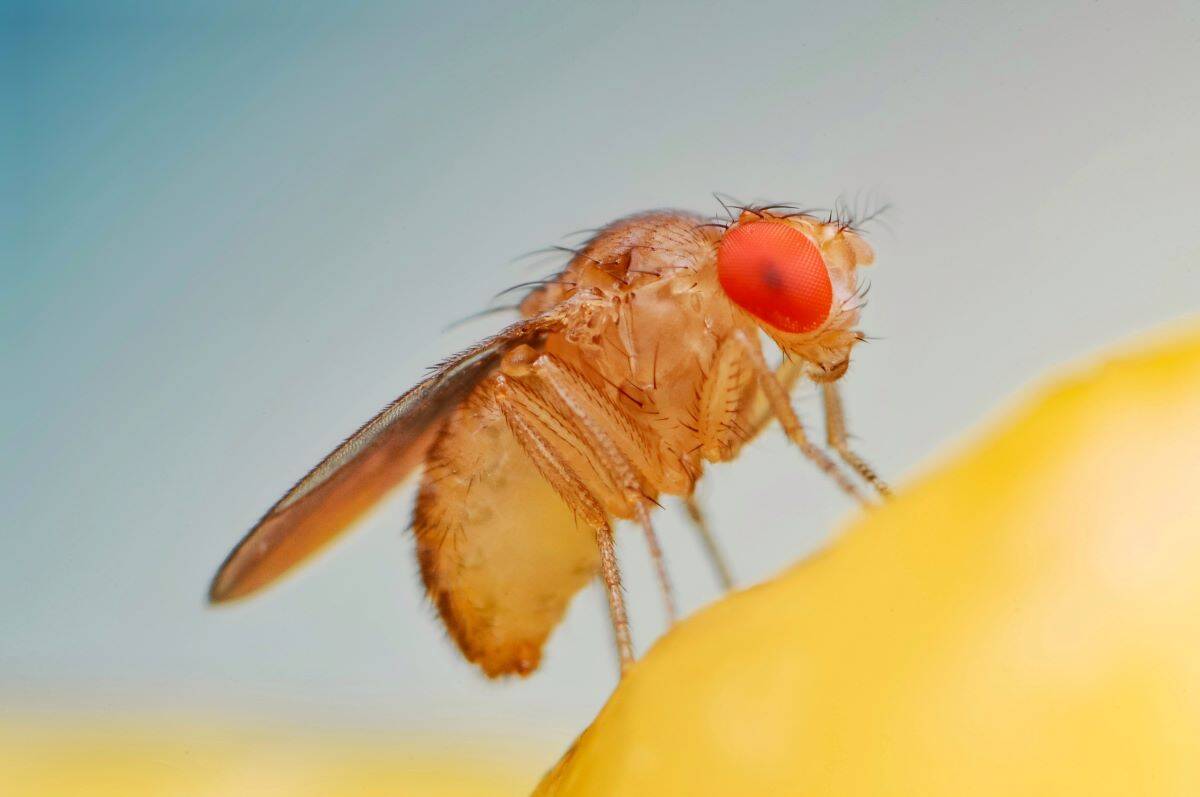11.11.2024
COPD & asthma: Fruit flies as an alternative model in lung research lung research
Around 600 million people worldwide suffer from asthma and COPD. In order to understand the development and progression of these chronic lung diseases mammalian models are often used in science to understand the development of these chronic lung diseases. Researchers from the Research Center Borstel, Leibniz Lung Center and the Christian-Albrechts-Universität zu Kiel (CAU) have used Drosophila melanogaster as an alternative model to study these respiratory diseases. In the current issue of the International Journal of Molecular Sciences show that the fruit fly can be a relevant and attractive alternative for future research. for future research.
Chronic obstructive pulmonary disease (COPD) and asthma are by far the most common respiratory diseases worldwide. As both lung diseases are currently incurable, it is essential to understand the mechanisms underlying the development and progression of the disease in order to prevent the development of the disease or to develop new therapeutic approaches. It is known that environmental influences such as cigarette smoke in early childhood increase the risk of disease later in life. Mammalian models are of great importance in investigating the pathomechanisms that lead to later respiratory disease. However, such experiments are not only time-consuming, but also very stressful for the animals.
The fruit fly Drosophila melanogaster offers many advantages for research in this field. Firstly, Drosophila melanogaster is an insect with a short life cycle of about 10 days at 25 °C. This life cycle comprises four developmental stages: egg (embryo), larva, pupa and adult. This short life span facilitates so-called cross-generational studies, in which it is possible to examine how the risk of suffering from respiratory diseases later in life is shaped early in children. In addition, Drosophila melanogaster is a particularly attractive model for studying lung diseases caused by cigarette smoke, such as COPD. As in humans, the respiratory system of the fruit fly consists of hierarchically arranged branches and the epithelium of the airways consists of a physical and immunological barrier. All inhaled pollutants first reach the surface epithelium of the lungs in both humans and fruit flies. Initial results show that cigarette smoke, as in COPD patients, reduces body fat in fruit flies, increases metabolic turnover and interferes with airway development. In addition, exposure of young female flies to e-nicotine significantly reduced the growth of their offspring from larvae to pupae to adult flies.
With the present work, the researchers were able to lay the foundation for the further use of the alternative model in COPD, asthma and airway research and show that this model can help to reduce the use of mammalian models in accordance with the 3R principles (reduce, refine, replace). In the future, the model can be used successfully not only in COPD and asthma research, but also in other areas such as cancer research.
Publication:
Ehrhardt, B.; Roeder, T.; Krauss-Etschmann, S. Drosophila melanogaster as an Alternative Model to Higher Organisms for In Vivo Lung Research. Int. J. Mol. Sci. 2024, 25, 10324. https://doi.org/10.3390/ijms251910324
Kontakt

Prof. Dr. Susanne Krauss-Etschmann
Programmdirektorin Chronische Lungenerkrankungen
T +49 4537 / 188-5850
krauss-etschmann@fz-borstel.de

